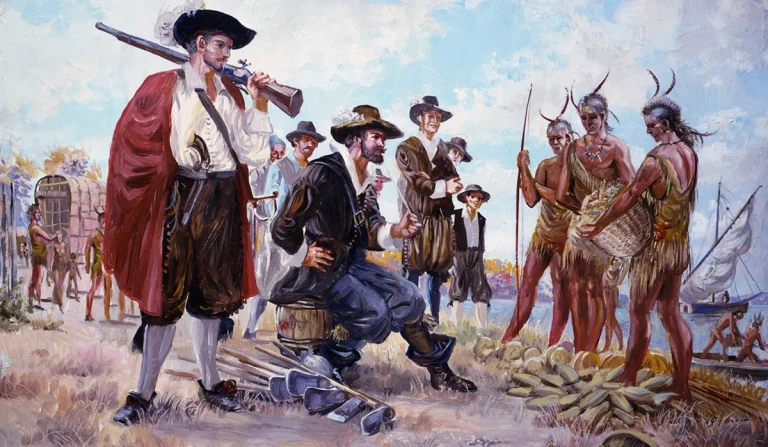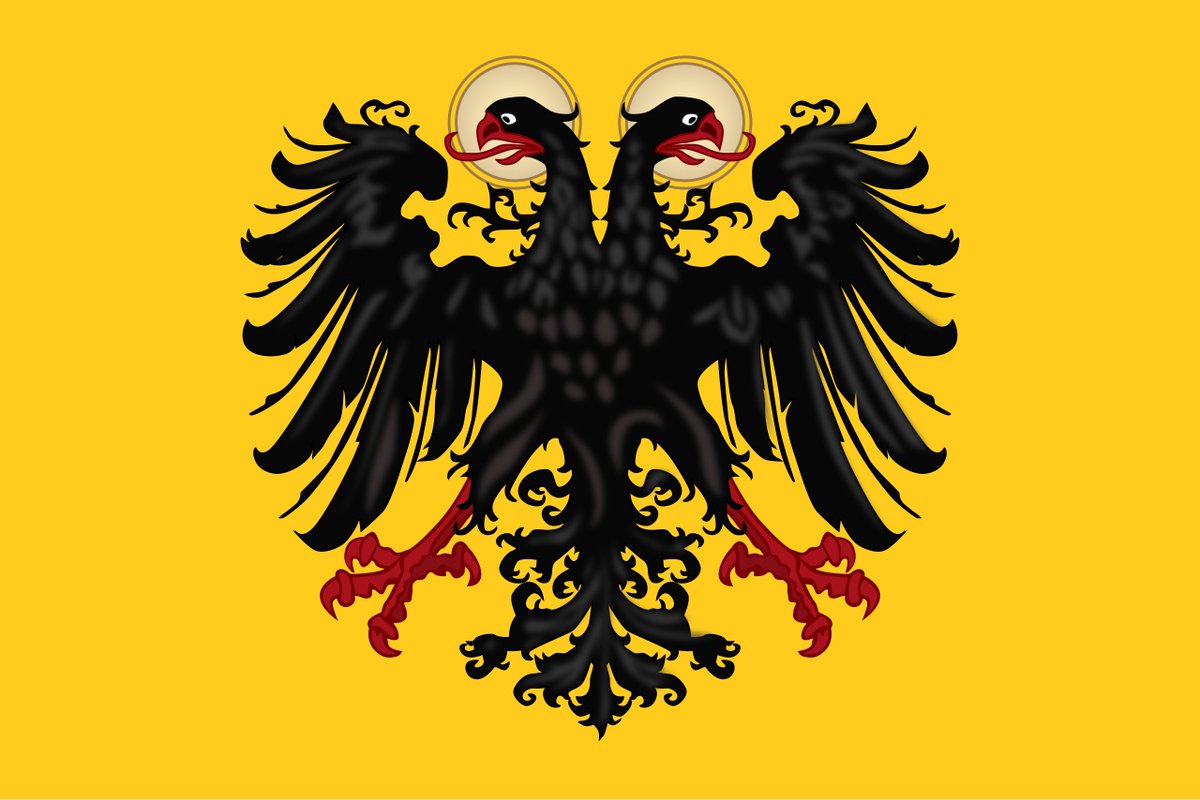Today 11 April is anniversary of the battle of Ceresole in 1544, one of the most bloody battles of the Italian Wars. What started as a classic pike and shot battle ended up being decided by a heavy cavalry charge of the French knights who decisively routed the Imperial forces! 
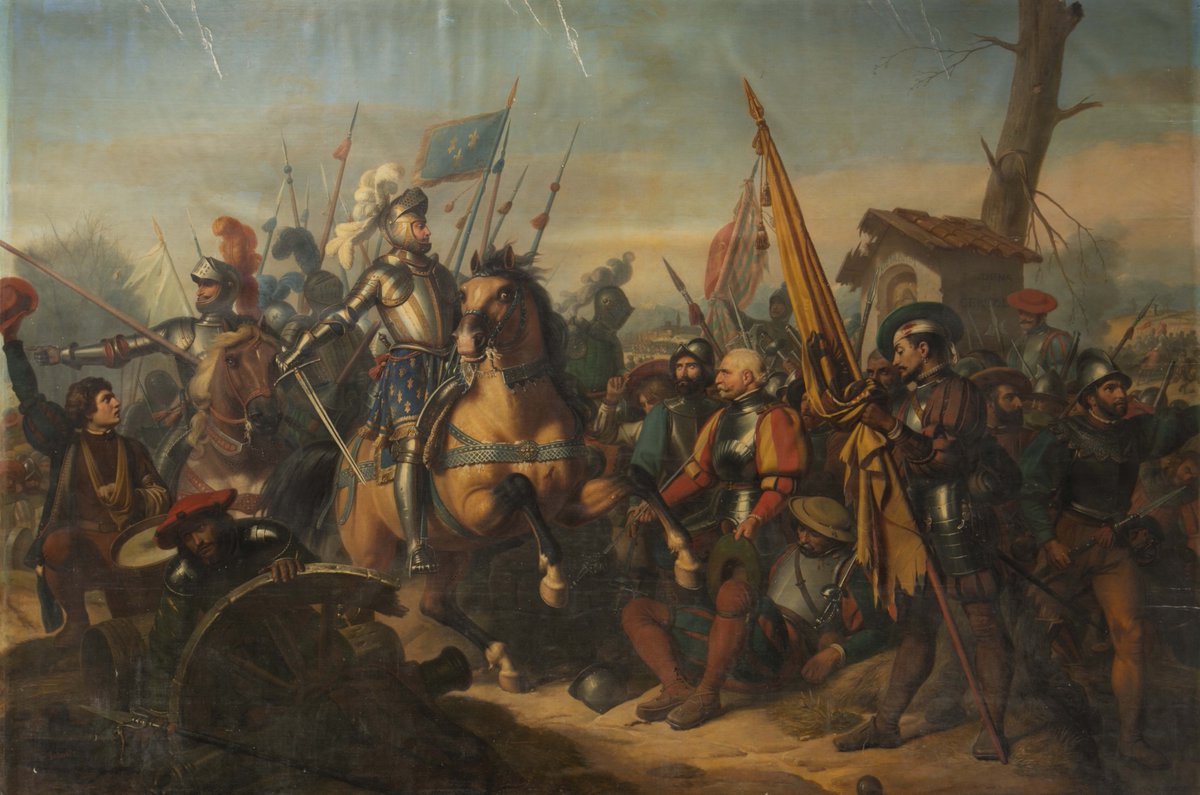
The Italian Wars were a series of wars that started after the French invaded Italy in 1494 and eventually other European superpowers became involved. It ended up being a conflict between the French and the Habsburgs over control of Italy and was only resolved in 1559. 



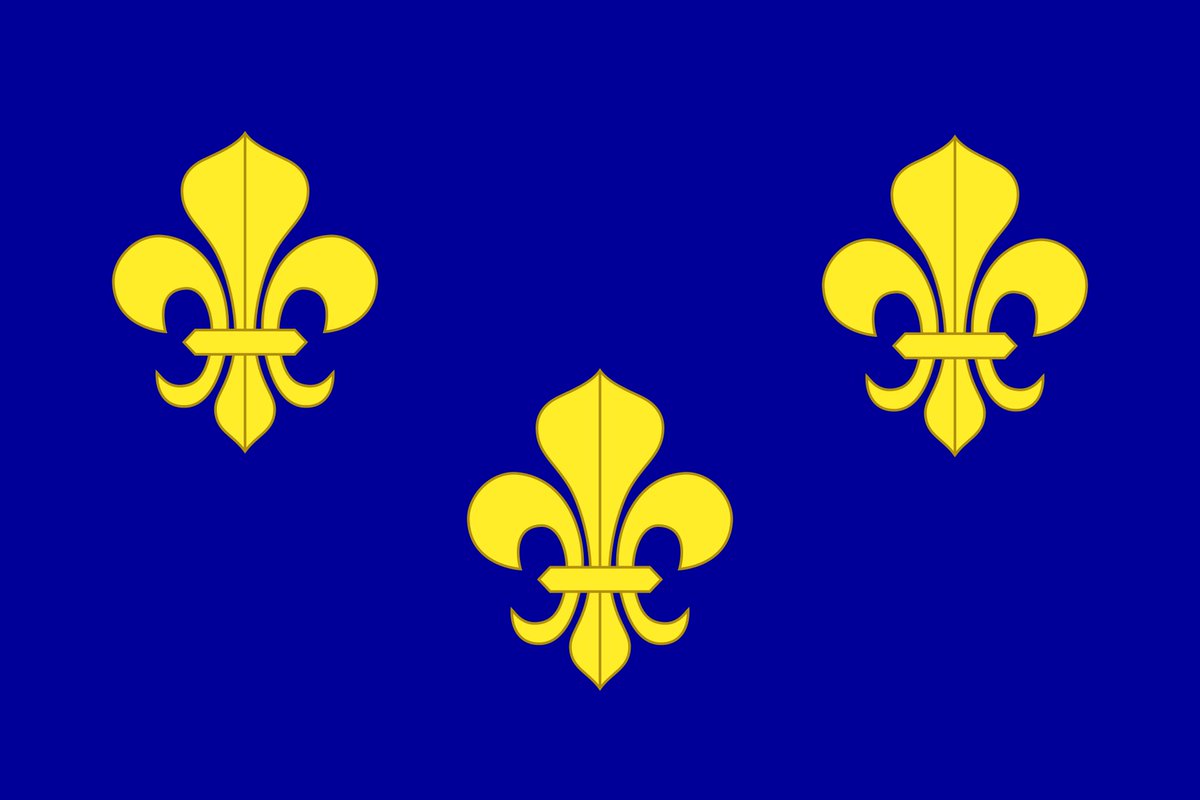

The Italian Wars influenced European military evolution greatly as Italy became a battleground for European strongest powers and their elite armies which were a mixture of mercenaries and noble knights. They used gunpowder weapons and artillery increasingly more effectively. 
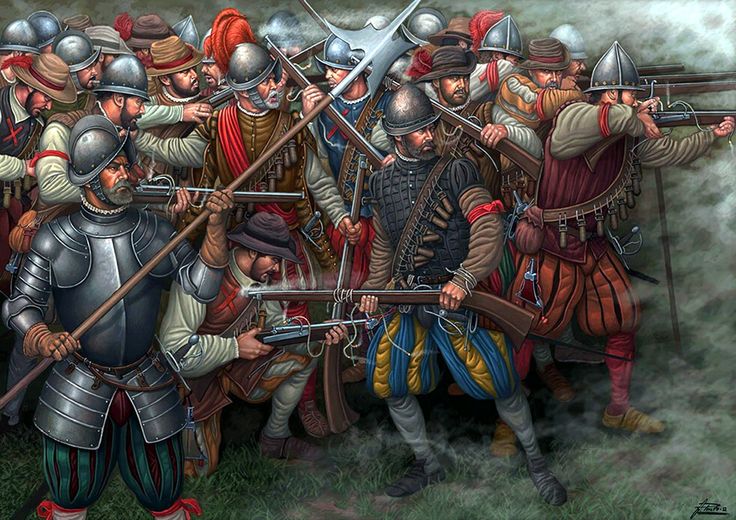
We can separate the Italian Wars in two phases whereas in the first phase of 1494-1530 there were a lot of decisive open pitched battles. Italian cities looked powerless against artillery and massive foreign armies decided their battles in open field mostly in northern Italy. 
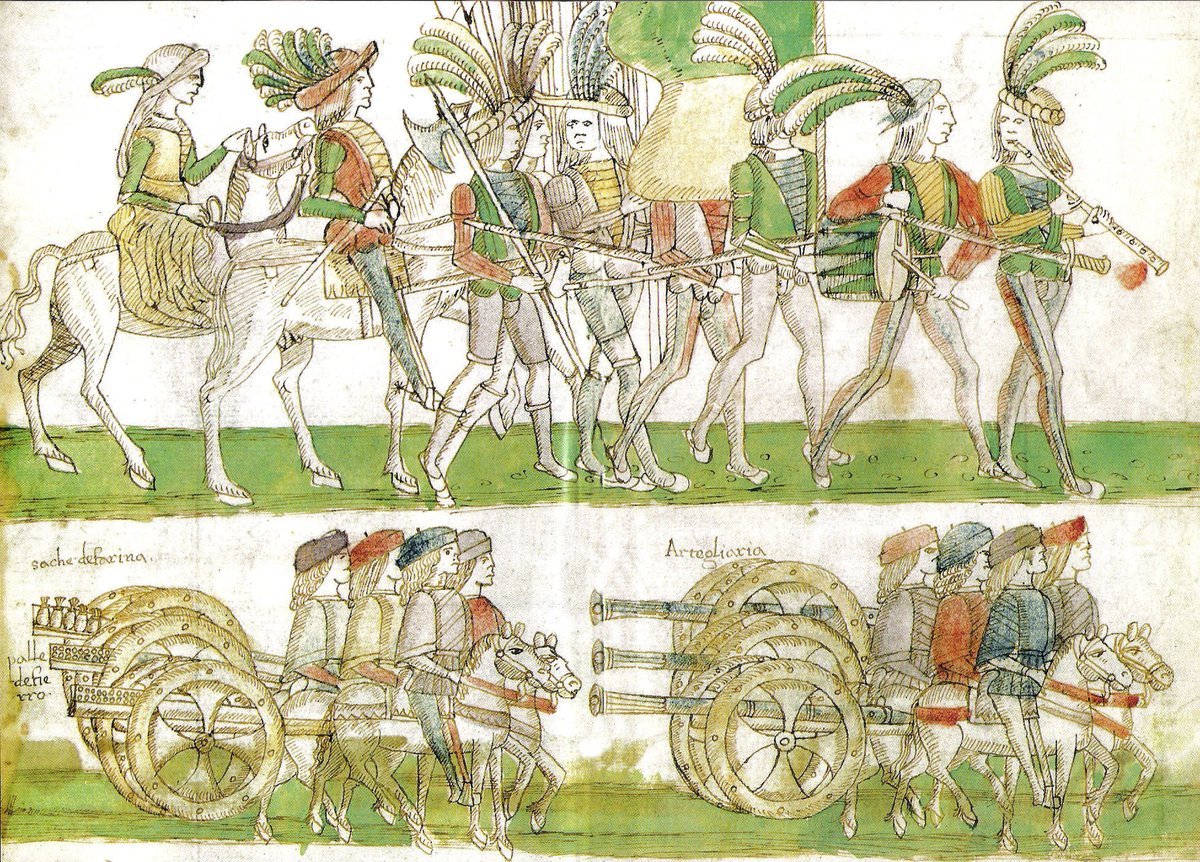
New "pike and shot" tactics were developed which increased the effectiveness of arquebus guns while protecting them from cavalry charges at the same time with long pikes. But these tactics also proved very lethal for both armies engaging and casualty rates were high! 
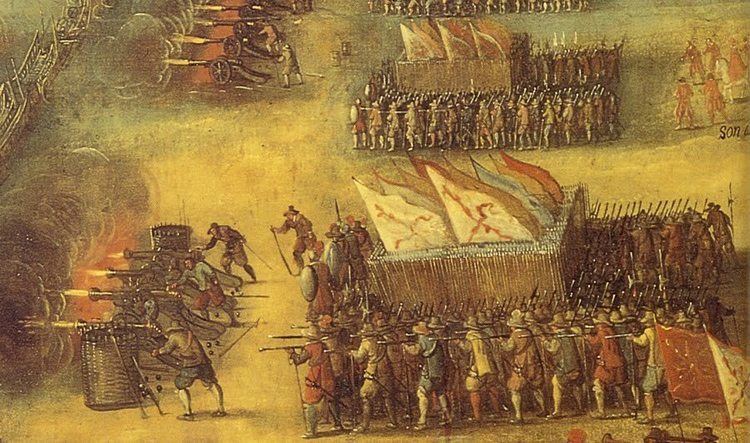
These open battles proved very costly and in the second phase of the Italian Wars 1536-1559, Ceresole would be the only large pitched battle, and the number of casualties would once again be massive just like in previous such encounters. 

The battle of Ceresole happened during the Italian War of 1542-1546 as the French advanced through northern Italy in hopes of getting to Milan, their old goal in Italy which was in Habsburg hands. The Habsburg Imperial army sent to face them occupied the village of Ceresole. 
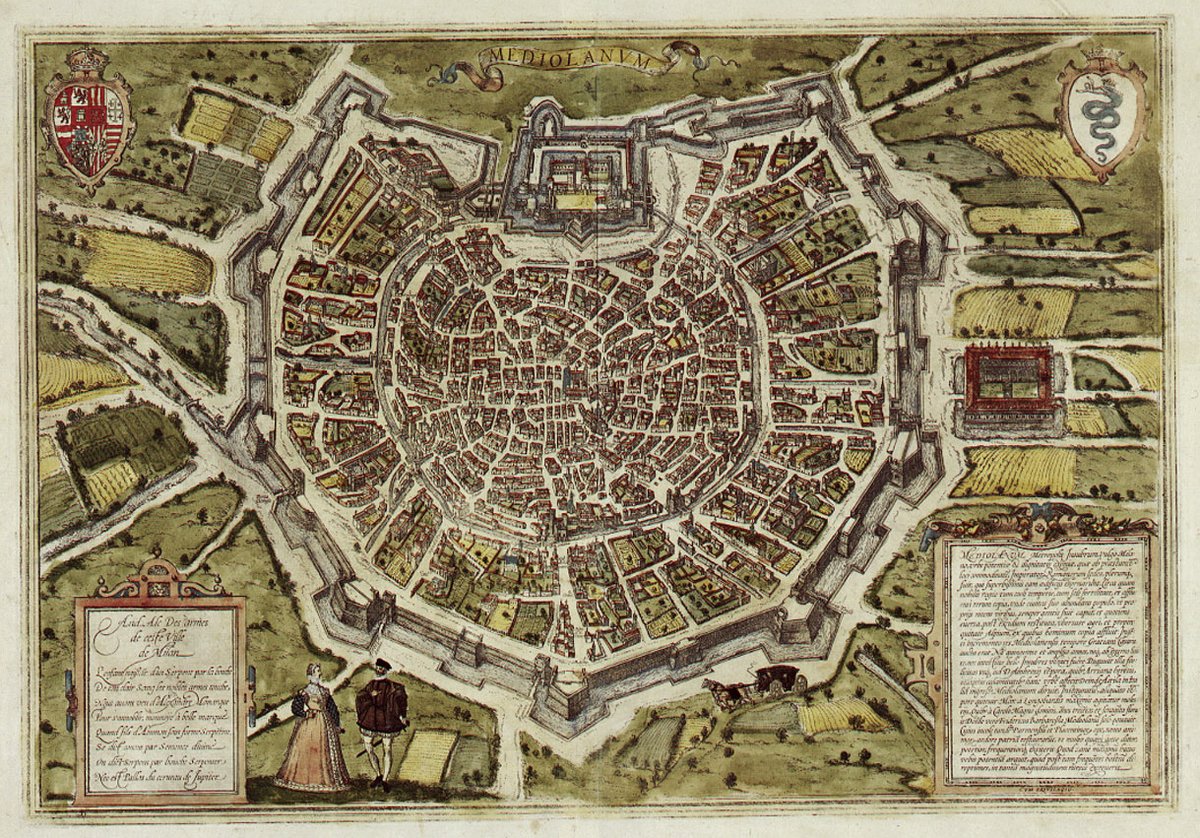
Both armies were similar in size at around 15000 men, but the French army led by François de Bourbon, Count of Enghien, tried to capitalize on their superior cavalry and lured the Imperial army out to a nearby open field where cavalry would have more space to maneuver. 

The Habsburg Imperial army led by Alfonso d'Avalos, marquis of Pescara, consisted of Spanish and German landsknecht mercenary infantry, combined with local Italian mercenary infantry and light cavalry, and a small detachment of Spanish heavy cavalry led by Carlo Gonzaga. 

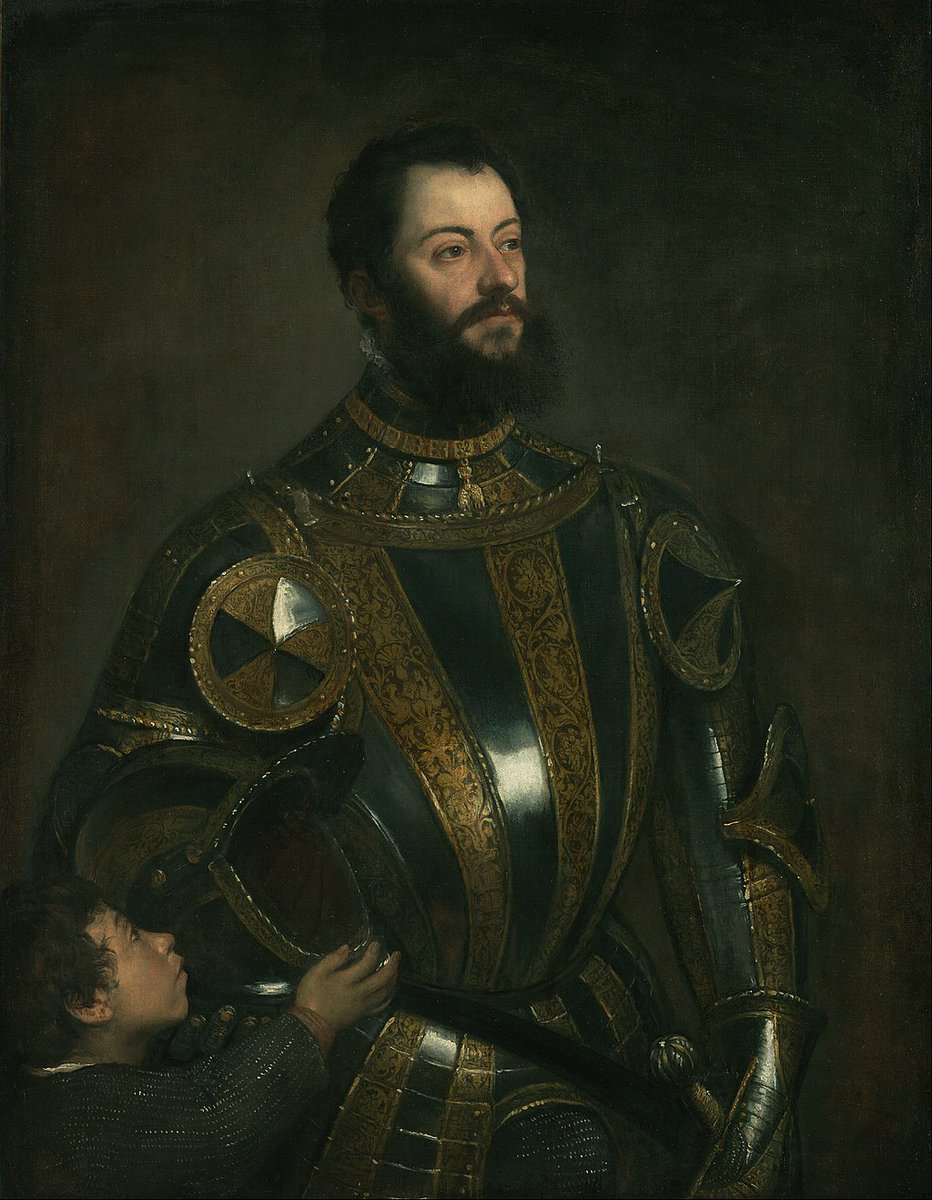
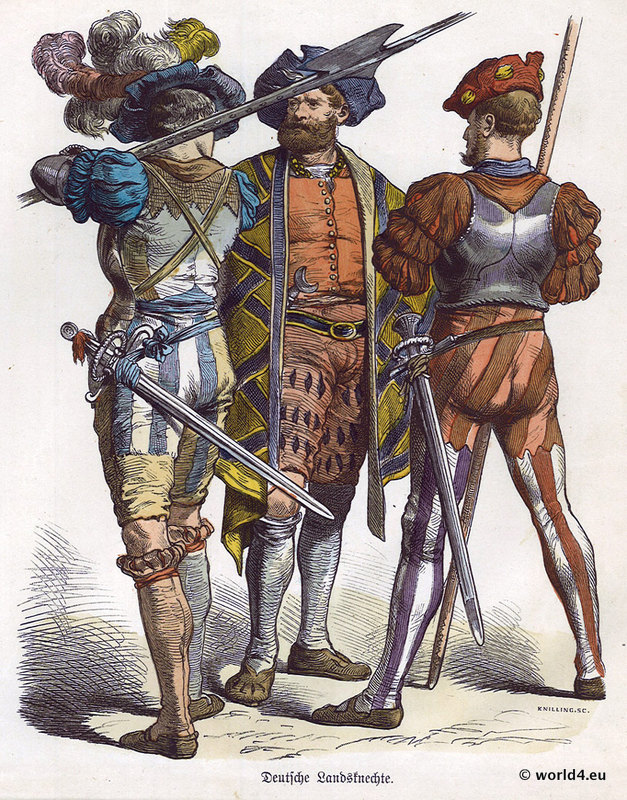
The French had a much larger force of heavy cavalry while their infantry relied on the famed Swiss mercenaries which were supported by French Gascon pikemen and Italian infantry mercenaries. Mercenary Italian light cavalry and French mounted archers were also present. 

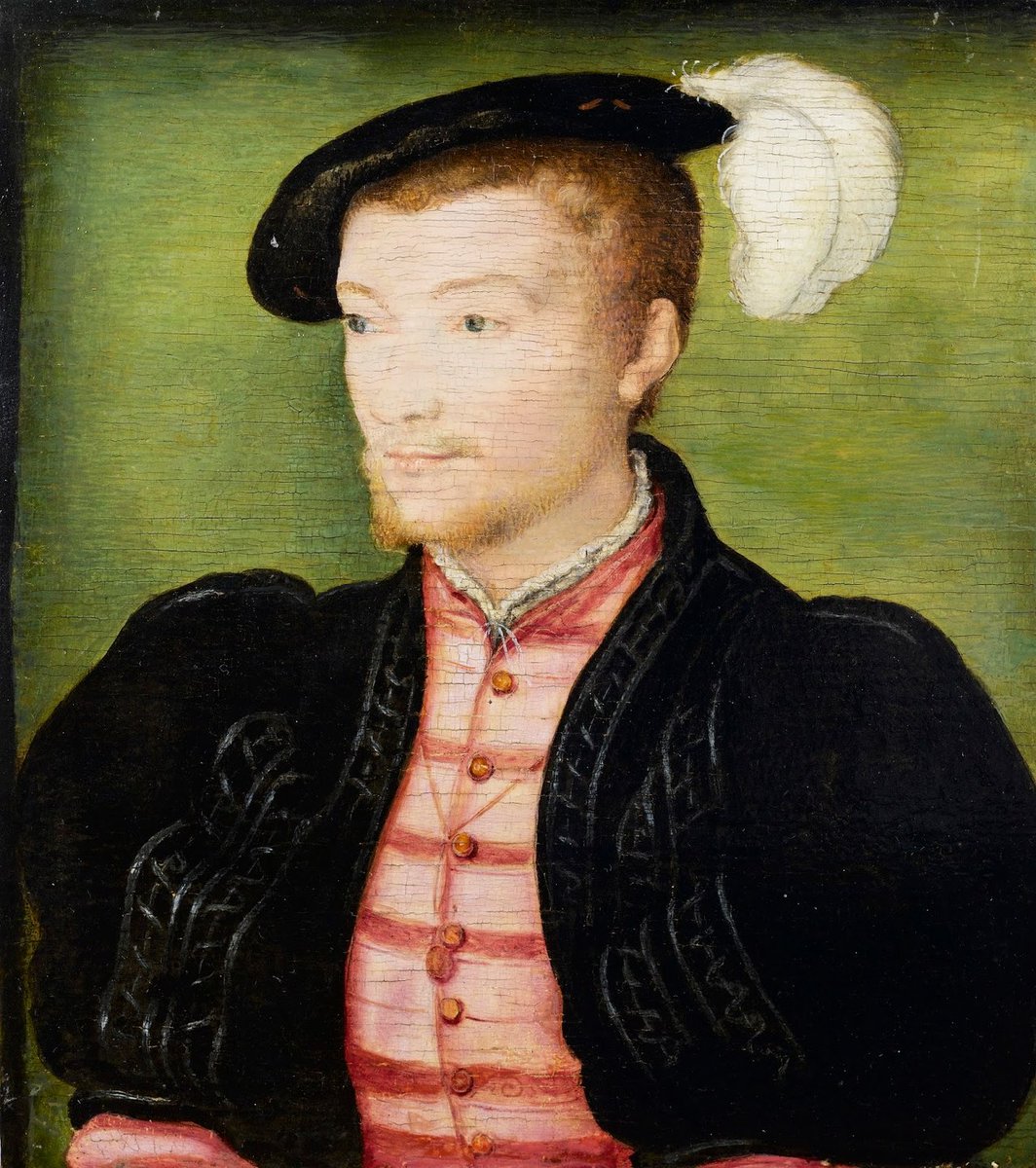
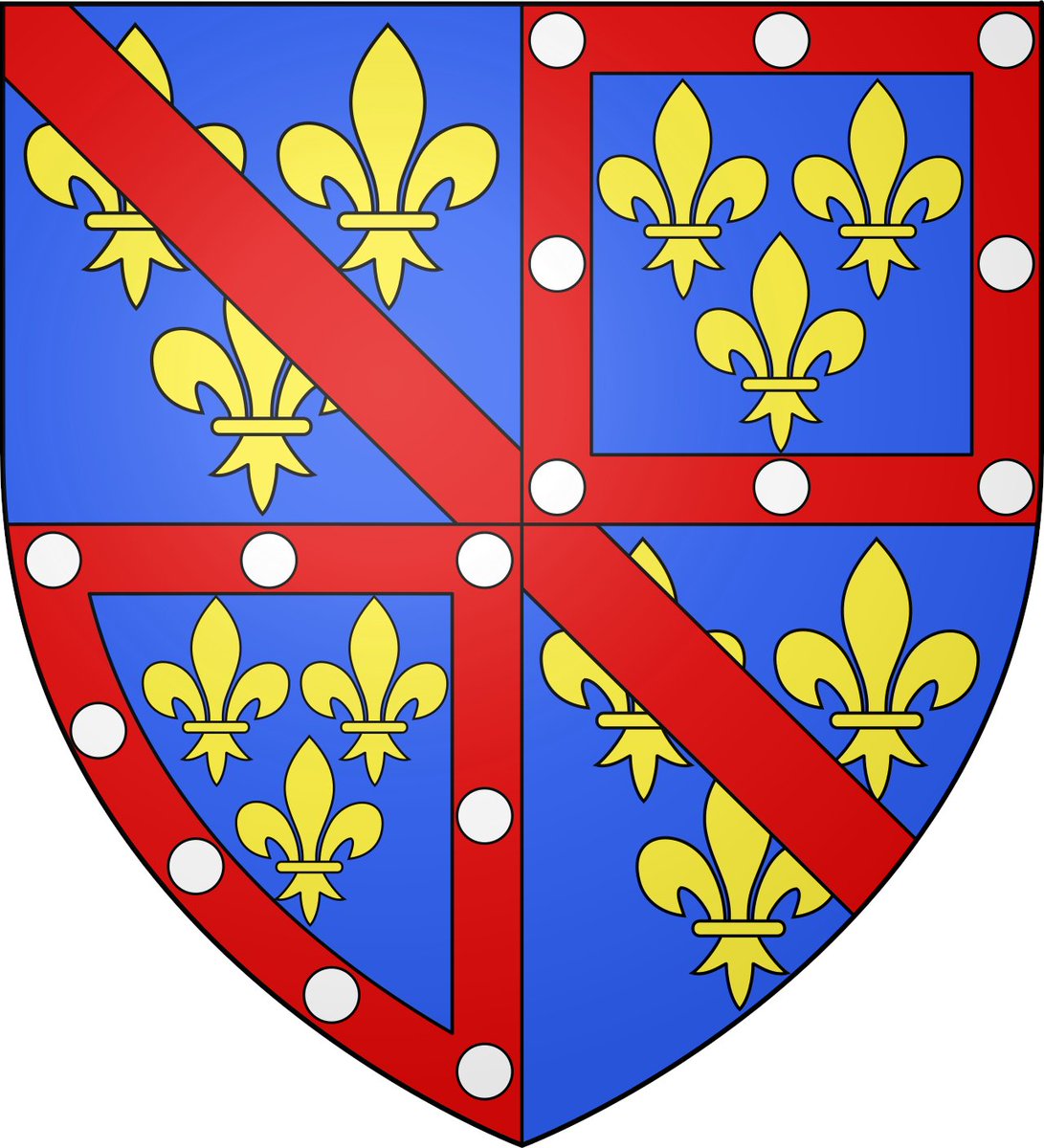
The two armies both faced each other in a most basic tactical way as they both formed a straight line in an open field, with infantry detachments mixed with cavalry units in between. The long line would essentially lead to three separate engagements forming at once. 
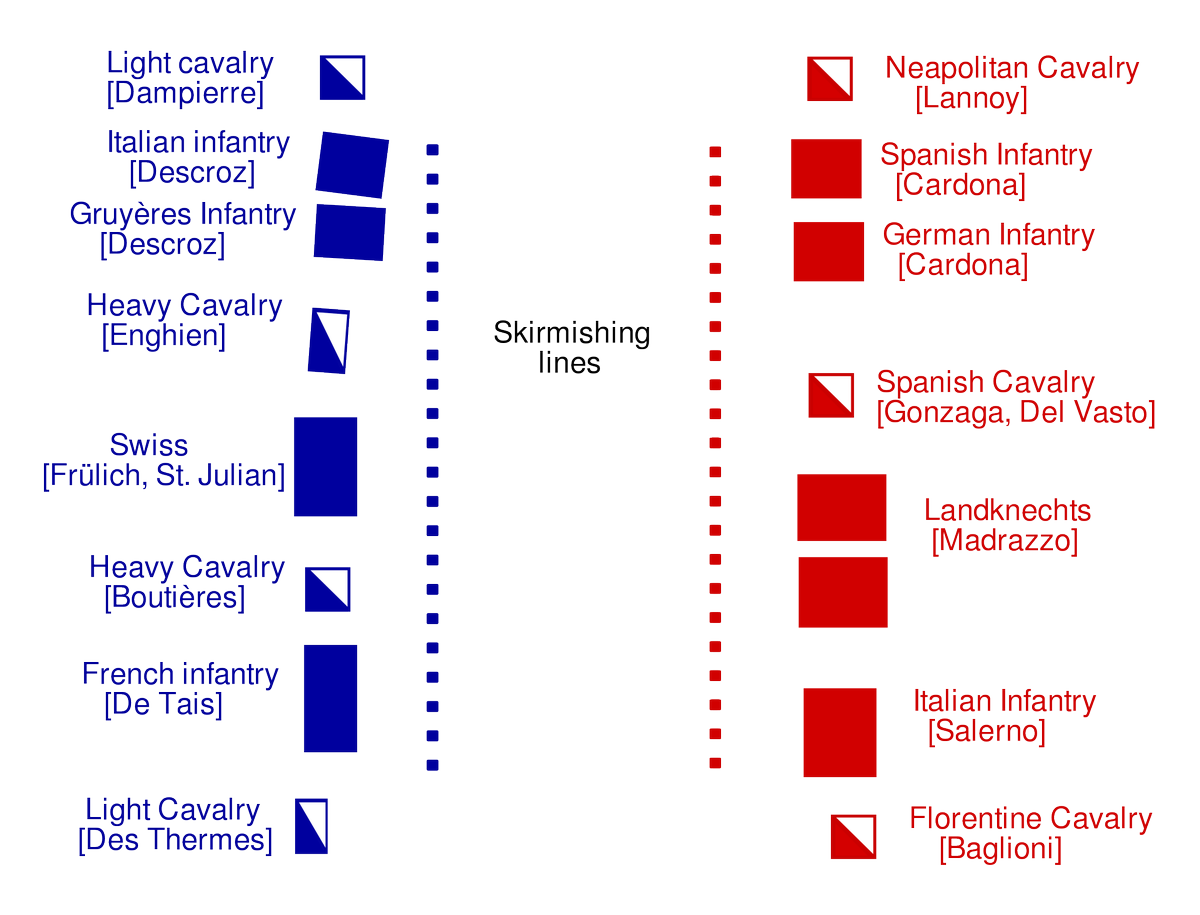
The battle began with arquebusiers skirmishing from both sides and artillery exchanging fire, but even after hours not much damage was done. After these initial exchanges the French light cavalry on the right attacked and the Imperial army ordered advance along the whole line. 
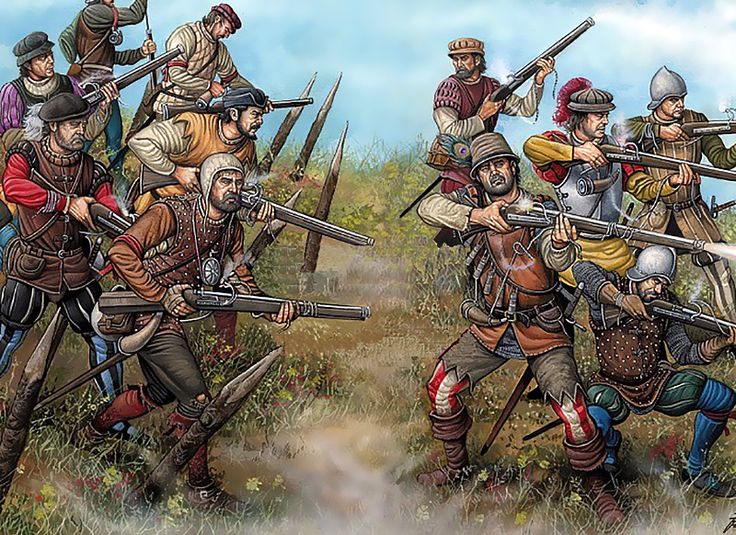
On the Imperial left, the French cavalry routed the Italian mercenary cavalry, but was held back by the Italian infantry which captured one of French commanders des Thermes. On the Imperial right things were going bad for the French as well. But in the center, hard battle ensued. 
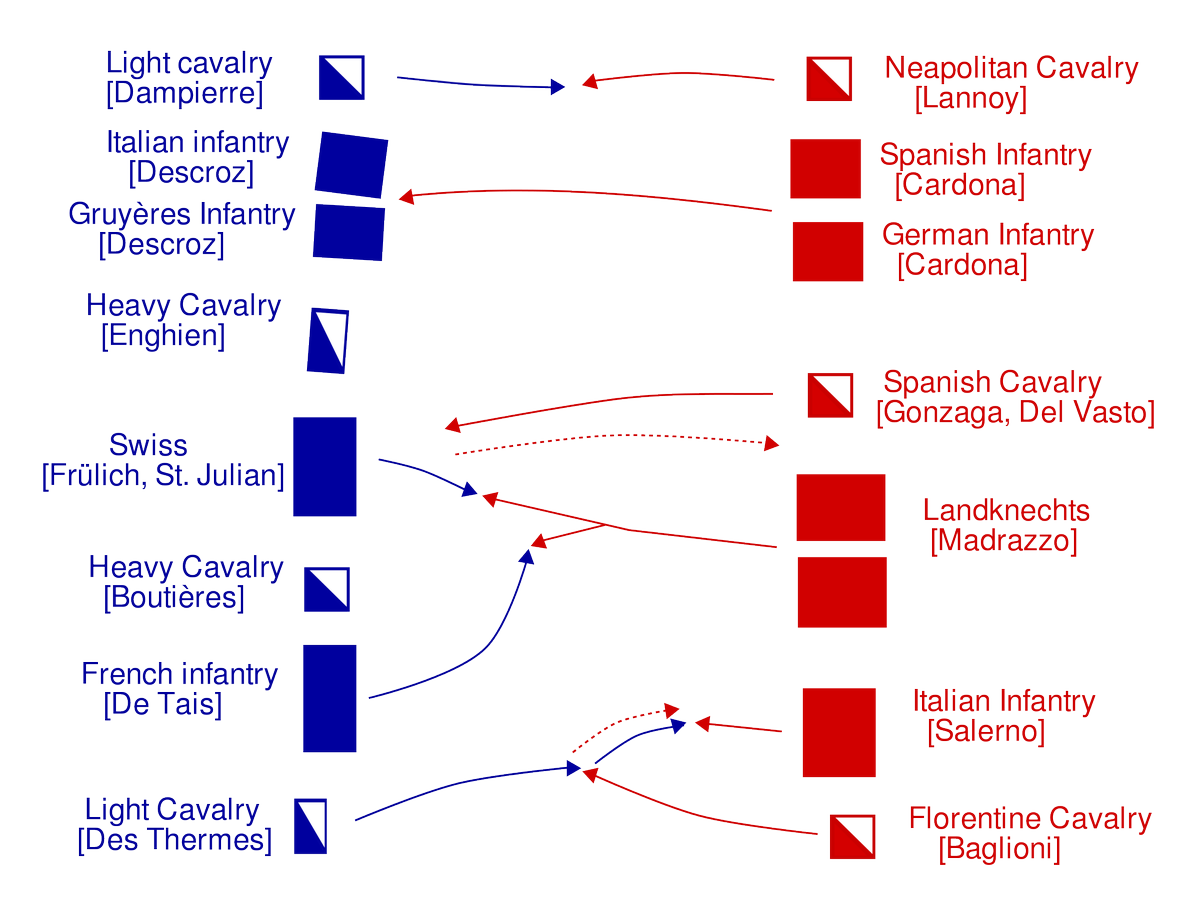
On the Imperial right, the French cavalry routed the enemy light cavalry with ease but then faced the experienced Spanish and German landsknecht pike infantry. The French infantry consisting of Italian and Swiss mercenaries fled and their cavalry tried in vain to break the enemy. 
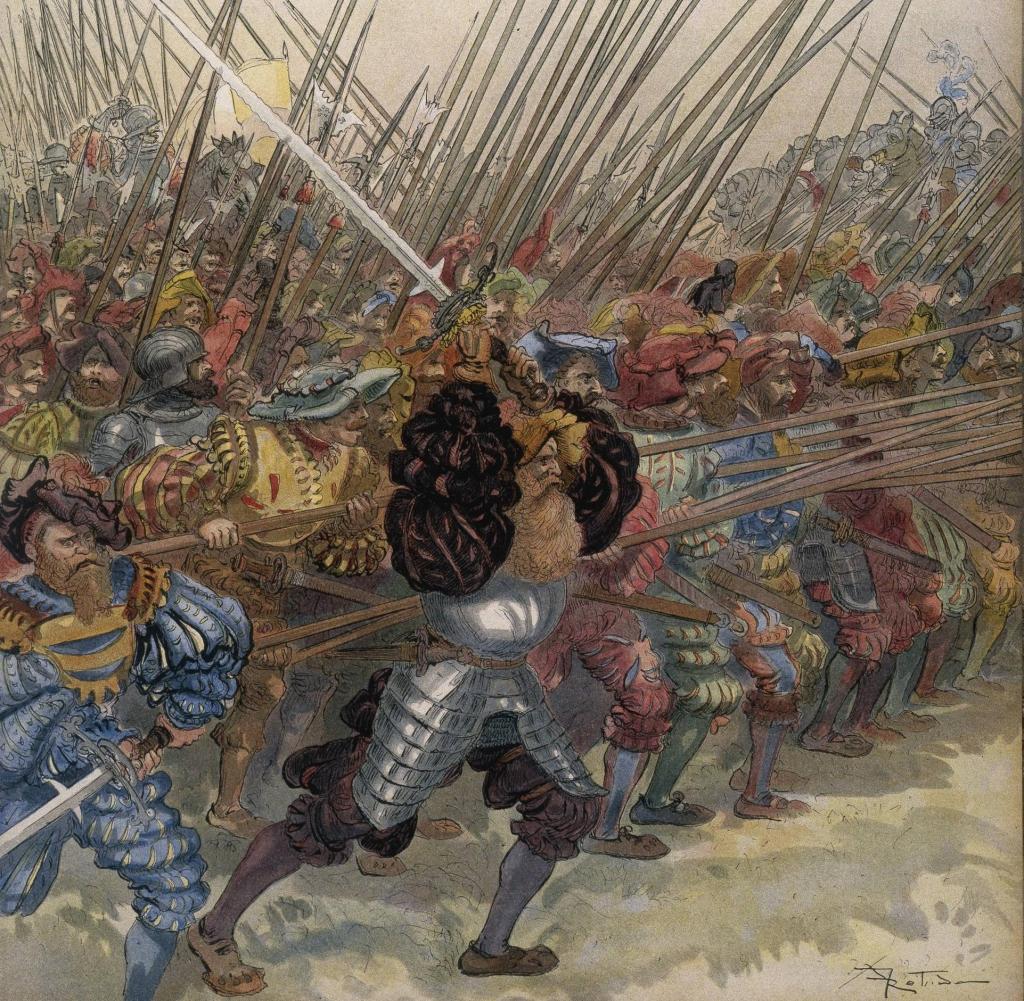
Meanwhile the most experienced Swiss mercenary troops fighting for the French were in the center, backed up by Gascon pikemen and French heavy cavalry. They faced contingents of German landsknecht mercenaries. Both infantry formations were formed in a classic pike and shot style. 
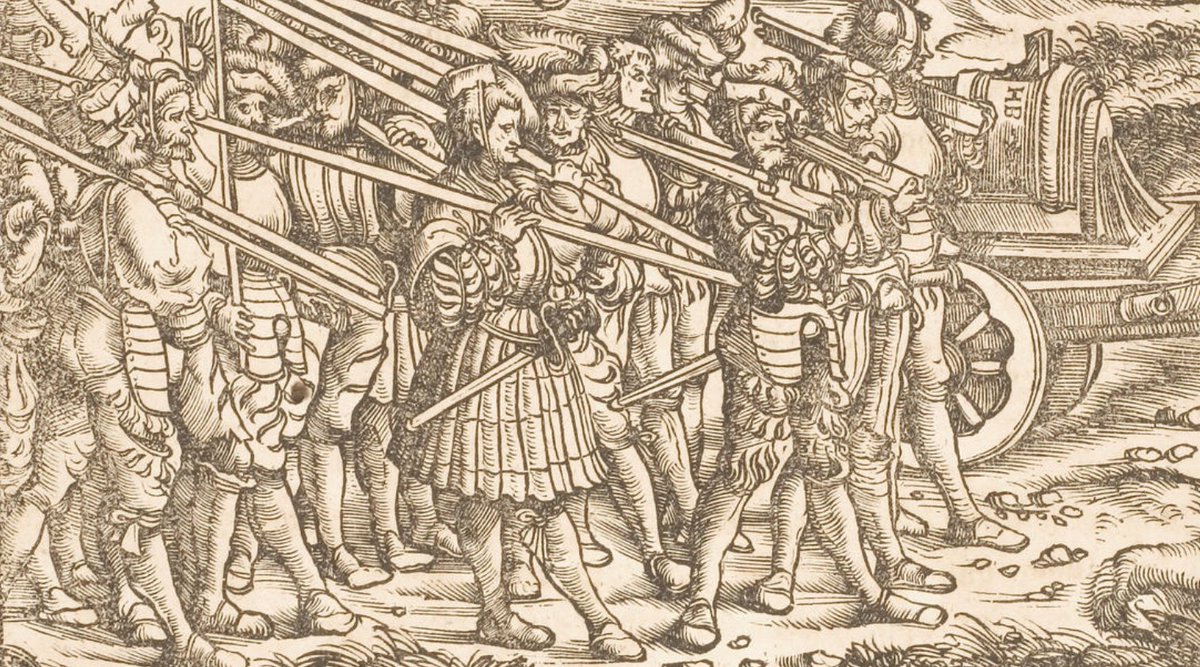
As they approached each other, both infantries had the same plan. They placed arquebusiers in second and third line to hold their fire until close to the enemy and to then quickly shoot down the first ranks. As they fired at each other huge casualties were suffered by both sides. 

A brutal push of pike ensued as the infantry formations clashed with each other with pikes and melee weapons. At the same time, both cavalry forces tried to flank the enemy infantry formation. First the Imperial Spanish cavalry tried to flank the Swiss but it was unsuccessful. 


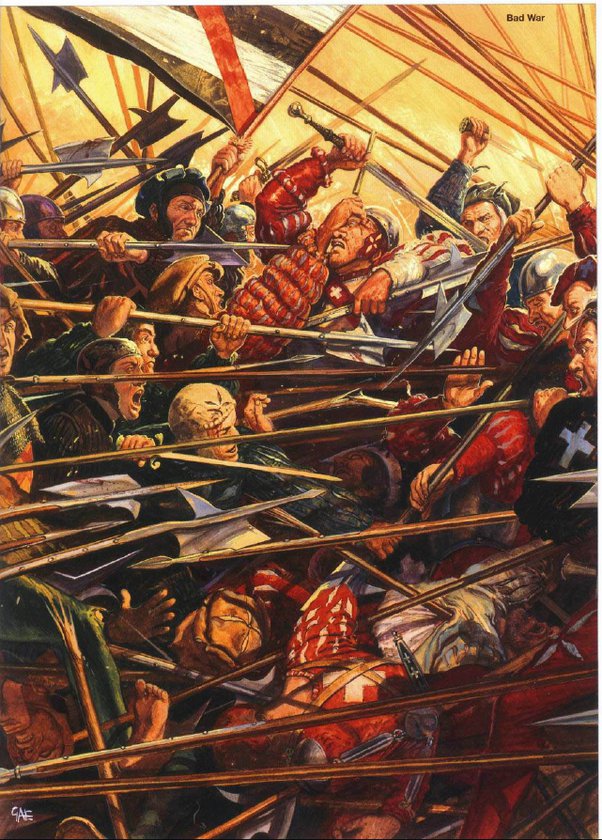
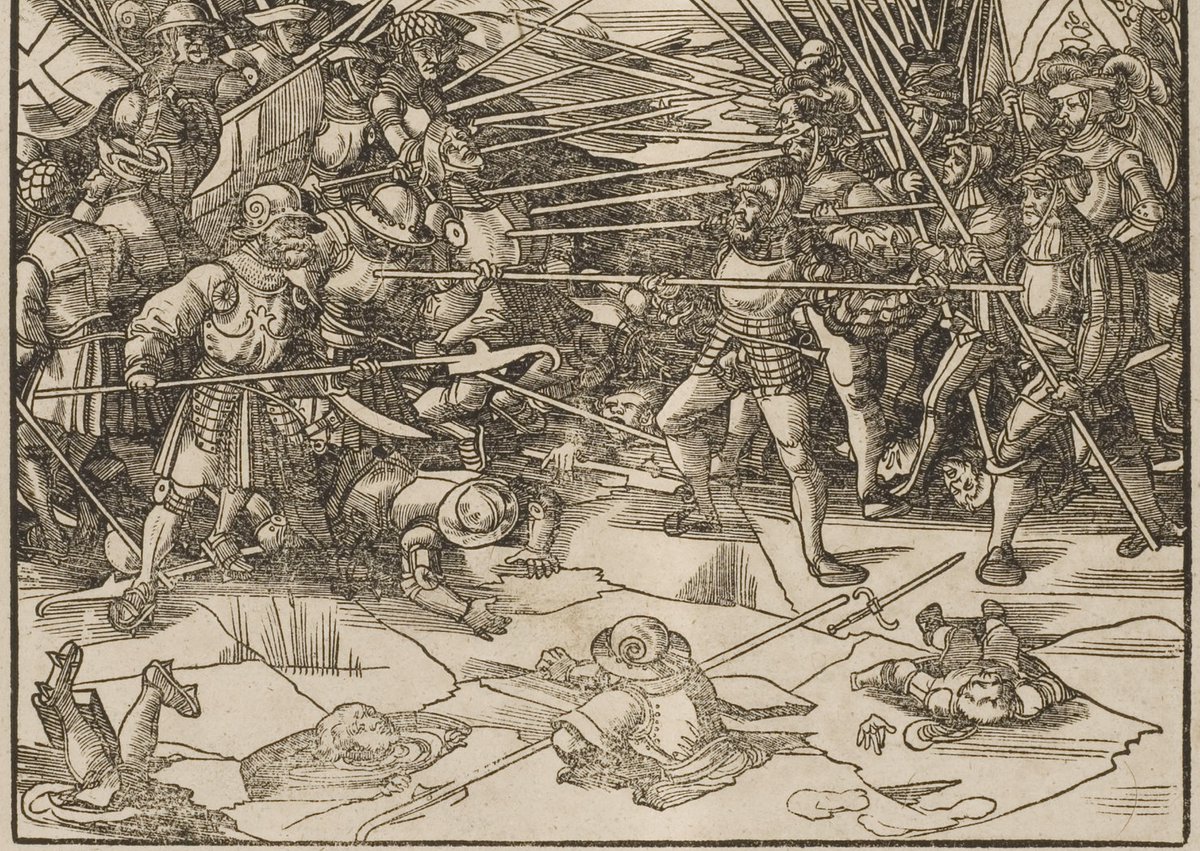
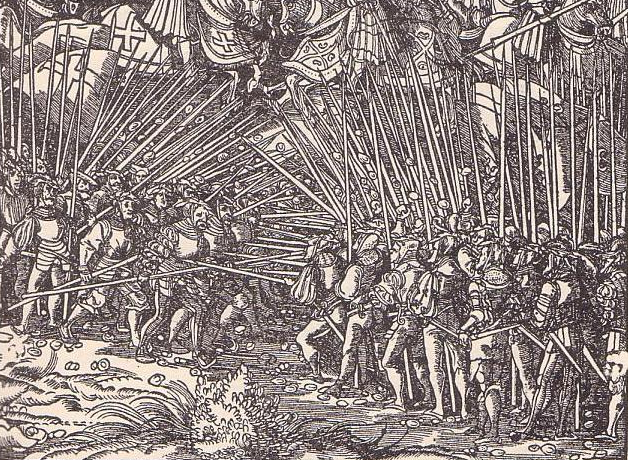
The Swiss managed to quickly turn their pikes around and fought off the enemy cavalry charge. The Imperial heavy cavalry was also not big enough to overwhelm the enemy infantry. However the more numerous French heavy cavalry had success with this same tactic soon afterwards. 
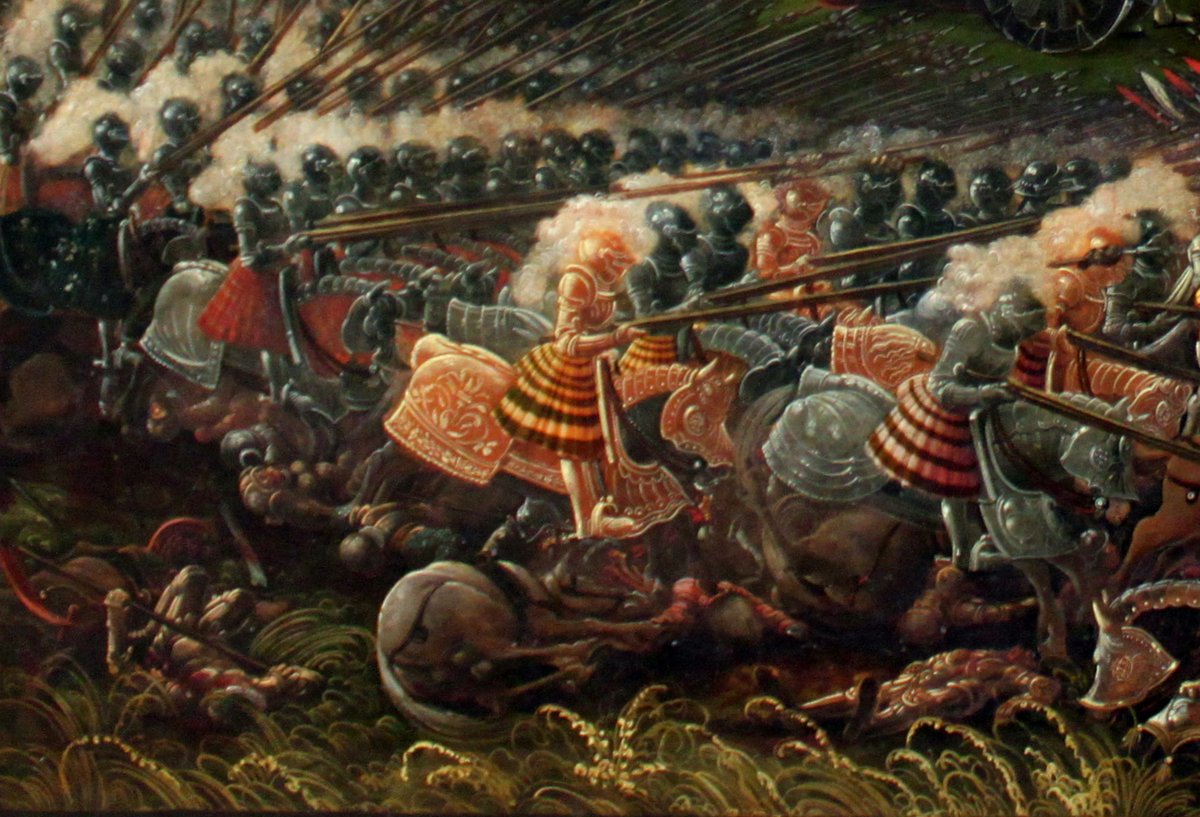
The French managed to flank the Landsknechts and delivered a devastating blow from the side of the pike formation that was badly defended. The Imperial infantry in the center completely broke and started fleeing. The Swiss eagerly chased them down and killed everyone they could! 

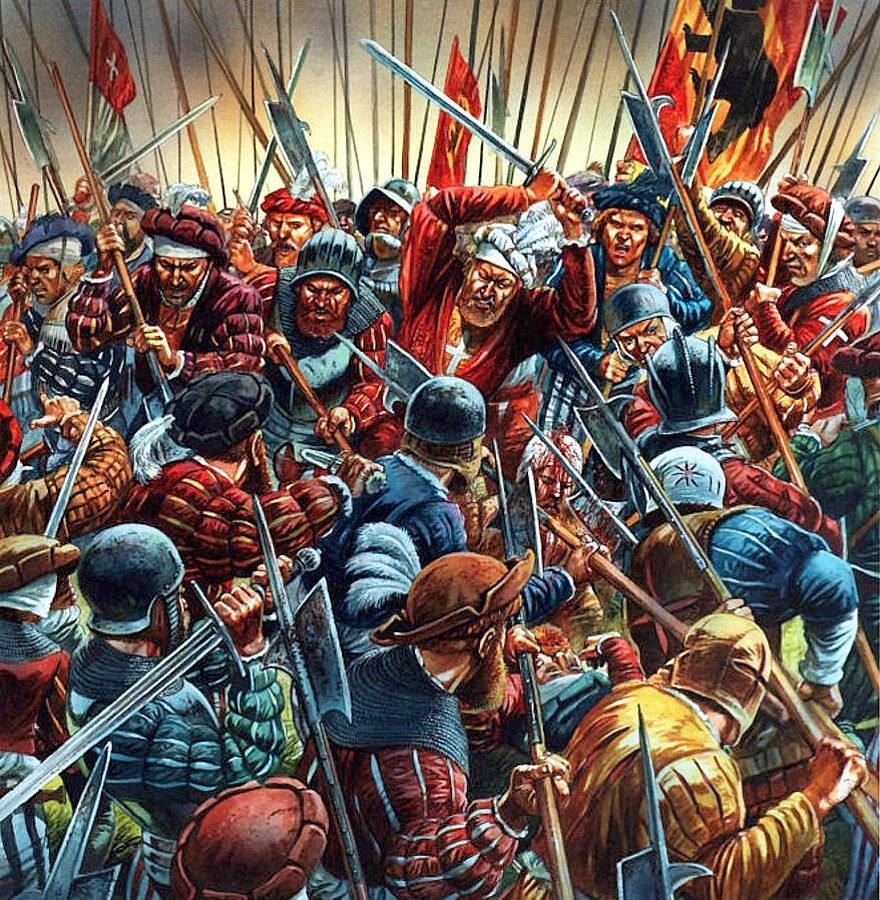

However because the battlefield was so big and chaotic, the news of French success in the center had not reached the French commander Count of Enghien yet who thought the battle was lost due to his own repeated failures to rout the Imperial infantry on the right with cavalry. 
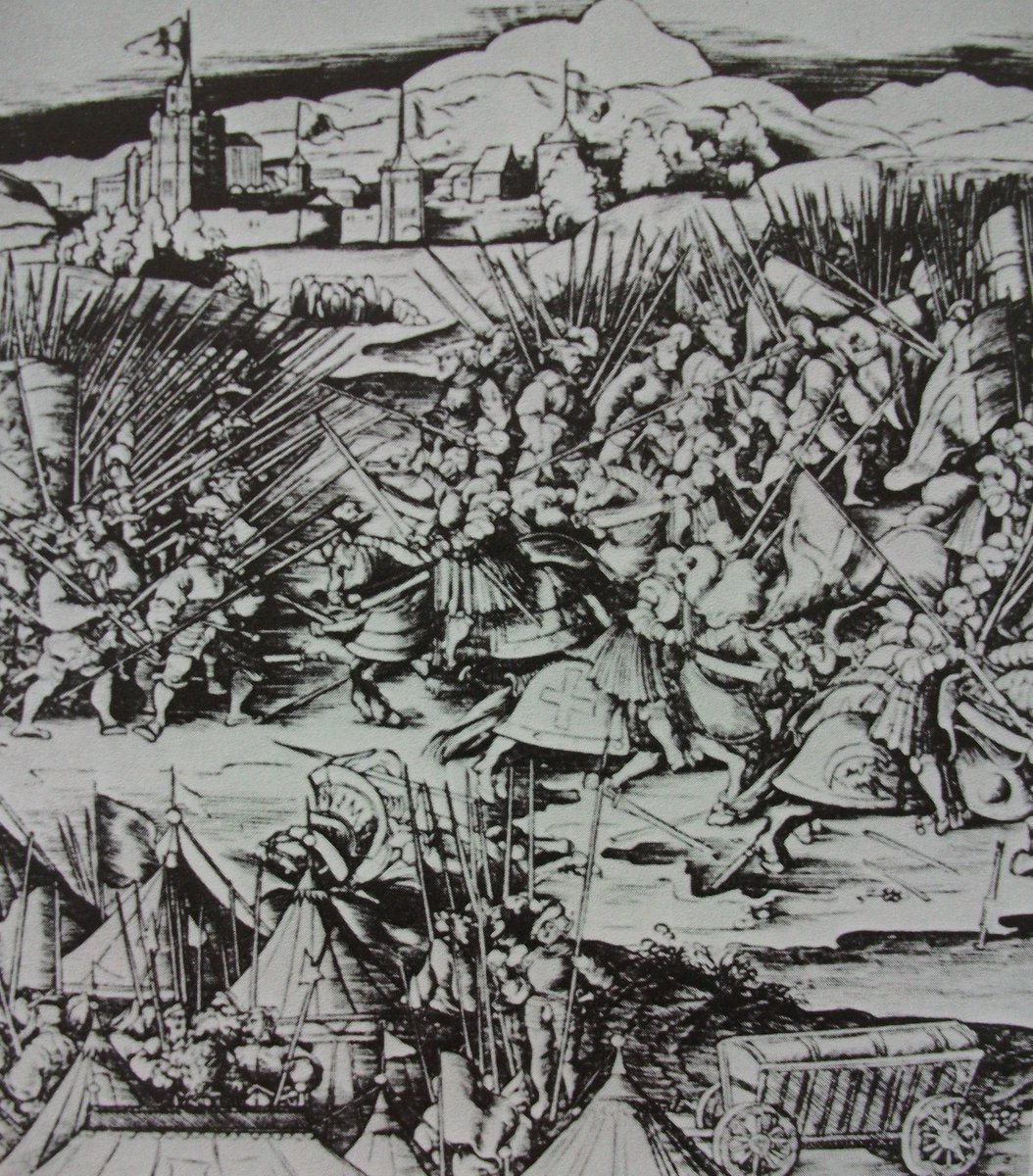
Finally, the victorious Swiss and French pikemen from the center were coming to help and managed to overwhelm the Spanish-German Imperial infantry from all sides, killing many! On the other side the victorious Imperial Italian infantry on the left did not manage to help in time. 
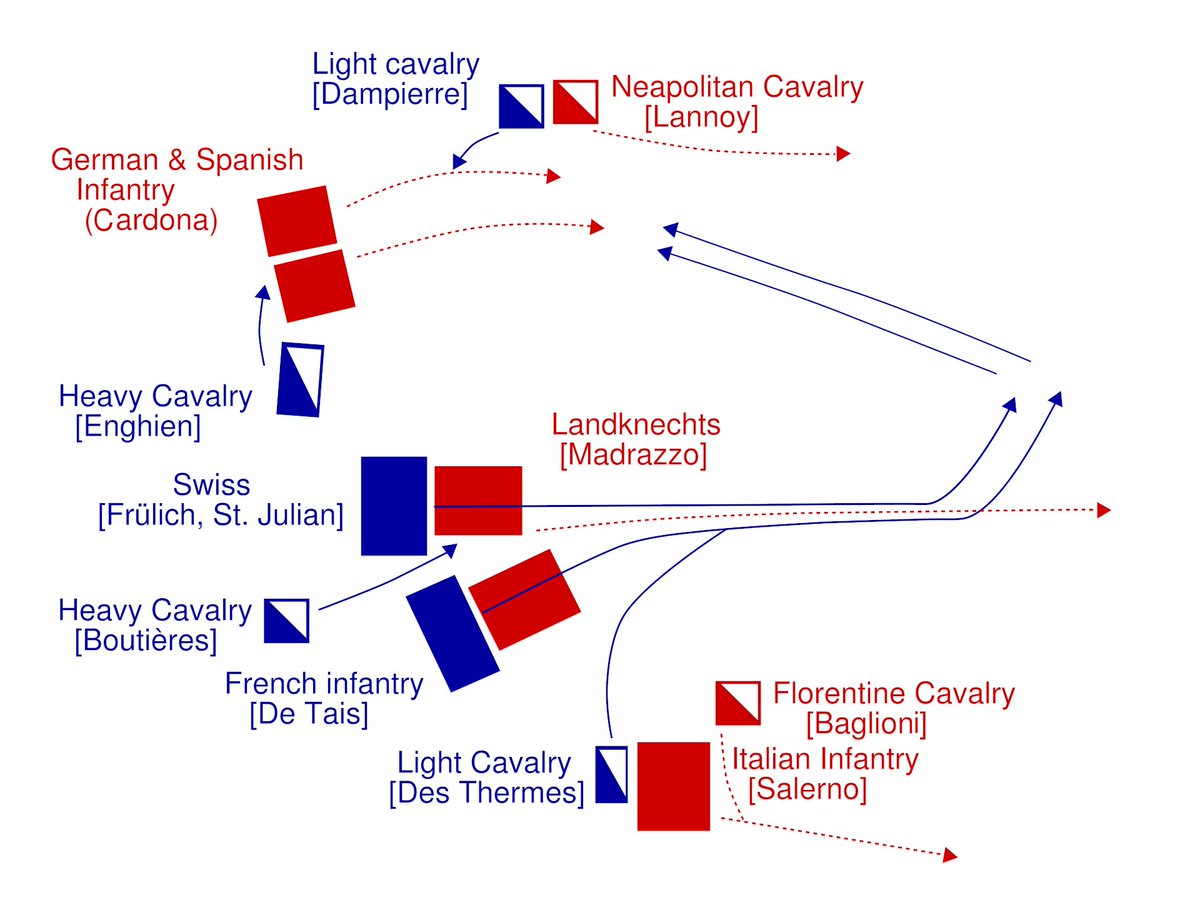
The casualties of this battle were huge, particularly on the Imperial side, where at least 6000 died, including the bulk of the infantry, but with number of dead possibly being even much higher. The French had considerable losses too, but much less compared to Imperials. 
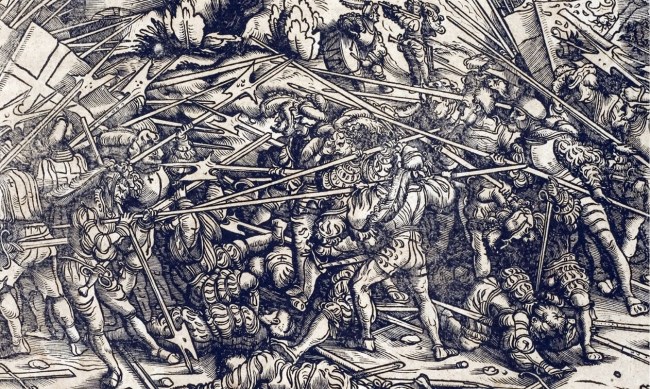
However despite the big French victory, they were not able to take advantage of their triumph. Habsburg Emperor Charles V was planning to invade France with English Henry VIII and French King Francis I shifted his attention to his own land instead of supporting Italian efforts. 
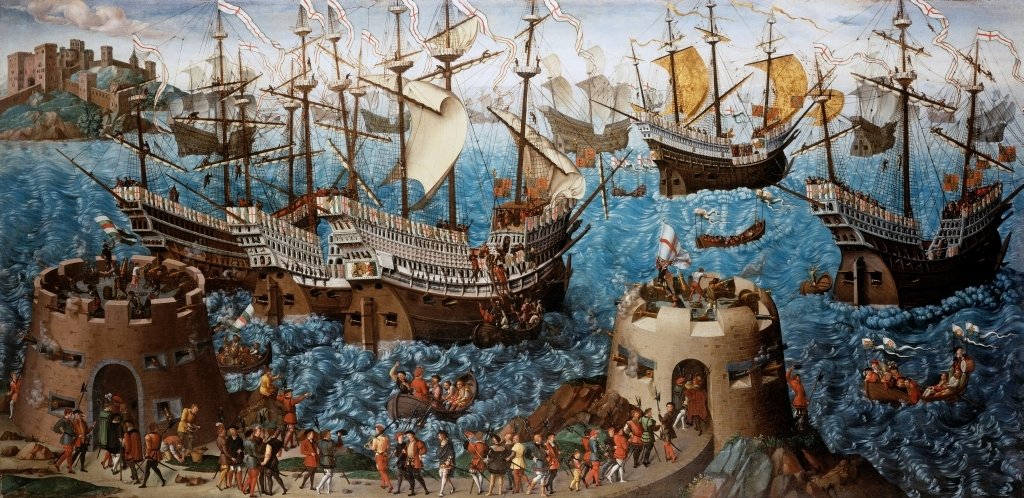
The victorious French were thus unable to take their main objective of Milan and the Imperial commander d'Avalos managed to redeem himself by defeating an Italian mercenary force in French service at Serravalle two months later, effectively crippling what was left of the French. 
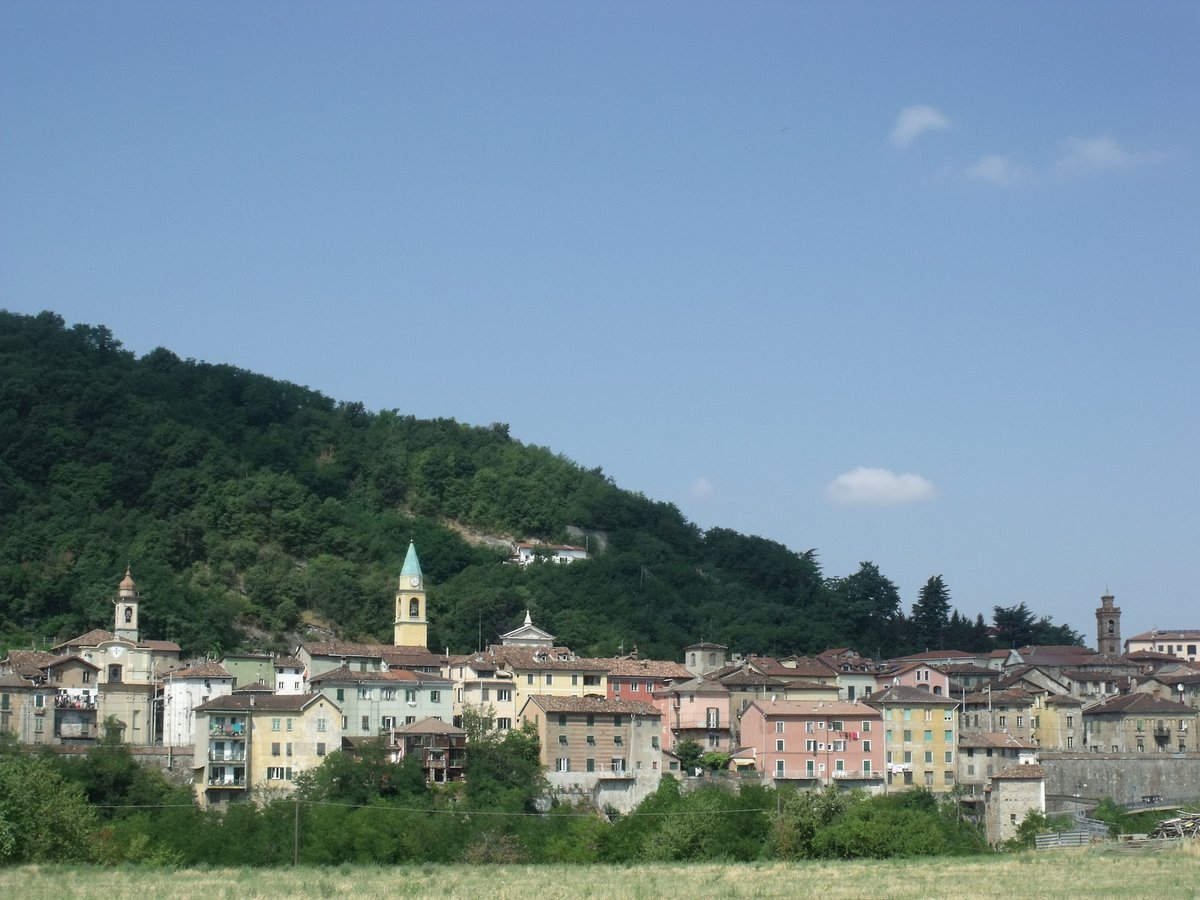
In the end, the status quo remained in Italy, rendering this epic and bloody battle essentially meaningless in the larger picture. But it is a very interesting battle to study from the perspective of military history. 
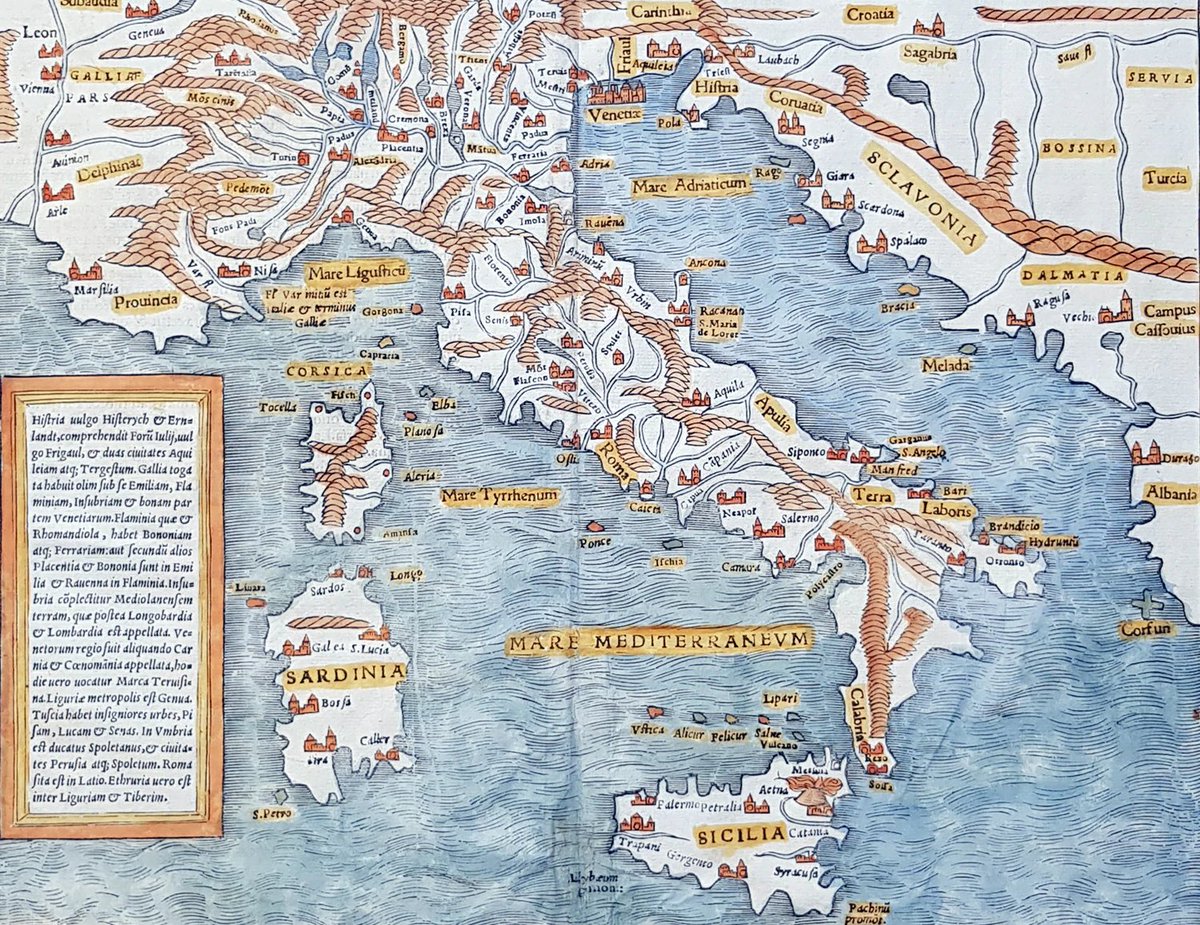
• • •
Missing some Tweet in this thread? You can try to
force a refresh
















